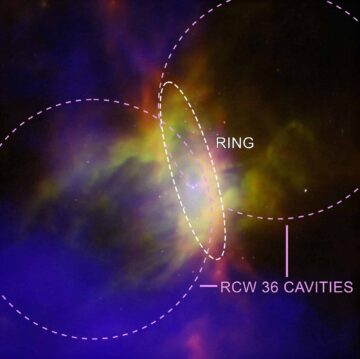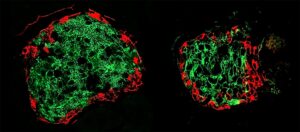The most common form of hydrogen in the universe is not the color- and odorless gas nor the hydrogen-containing molecules like water that are well-known on earth. It is the warm, dense hydrogen that makes up stars and planets. In some situations, this hydrogen can even conduct electricity like metals.
Scientists at the Center for Advanced Systems Understanding (CASUS) at Helmholtz-Zentrum Dresden-Rossendorf (HZDR) have taken a significant step forward to describe warm dense hydrogen as accurately as ever. They used a simulation method based on random numbers.
For the first time, their approach can solve the fundamental quantum dynamics of the electrons when many hydrogen atoms interact under conditions usually found in planet interiors or fusion reactors.
Scientists demonstrated that the properties of warm dense hydrogen could be described precisely with so-called Quantum Monte Carlo (QMC) simulations.
Böhme, pursuing a doctorate with his work at CASUS, said, “Our method does not rely on the approximations previous approaches suffered from. It instead directly computes the fundamental quantum dynamics and therefore is very precise. However, our approach limits scaling, as it is computationally intense. Even though relying on the largest supercomputers, we can only handle particle numbers in the double-digit range.”
Primarily, scientists rely on simulations to elucidate the characteristics of hydrogen and other matter under extreme conditions. One popular one is known as density functional theory (DFT). Despite its success, heated dense hydrogen has not been adequately described. The fundamental justification is that accurate models necessitate a detailed understanding of how electrons interact in warm, dense hydrogen.
The significance of the new method could be extensive. By ingeniously combining PIMC and DFT, it may be possible to gain the precision of the PIMC method and the speed and adaptability of the DFT method, which requires far less computational effort.
Young Investigator Group Leader Dr. Tobias Dornheim said, “So far, scientists were poking around in the fog to find reliable approximations for electron correlations in their DFT simulations. Using the PIMC results for very few particles as a reference, they can now tune the settings of their DFT simulations until they match the PIMC results. With the improved DFT simulations, we should be able to yield exact results in systems of hundreds to even thousands of particles.”
By adapting this approach, scientists could significantly enhance DFT, resulting in improved simulations of the behavior of any kind of matter or material. In fundamental research, it will allow predictive simulations that experimental physicists need to compare to their empirical findings from large-scale infrastructures like the European X-Ray Free-Electron Laser Facility (European XFEL) near Hamburg (Germany), the Linac Coherent Light Source (LCLS) at the National Accelerator Laboratory in Menlo Park or the National Ignition Facility (NIF) at Lawrence Livermore National Laboratory in Livermore (both USA).
Journal Reference:
- Maximilian Böhme, Zhandos A. Moldabekov et al. Static Electronic Density Response of Warm Dense Hydrogen: Ab Initio Path Integral Monte Carlo Simulations. Phys. Rev. Lett. 129, 066402. DOI: 10.1103/PhysRevLett.129.066402













